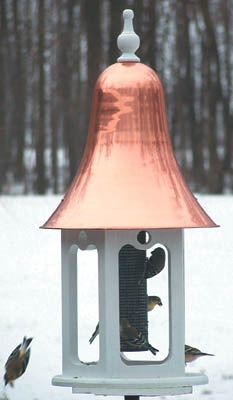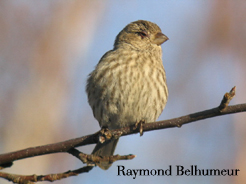Watch Out for this at Wild Bird Feeders

Aside from the usual suspects like cardinals, chickadees titmice and wrens, goldfinches are still around from summer- but with their new winter feathers they’re looking a bit drab as seen on 

This is why maintaining clean feeders is important. Non-porous surfaces like glass, copper, recycled plastic or vinyl are much easier to clean than wood. These wild bird feeders promote a healthier environment because bacteria can’t settle into cracks and crevices. There are a few easy steps to help prevent the spread of conjunctivitis and what to do should you see an infected bird in your yard.
- Space feeders as widely as possible to divert large crowds from gathering at one spot.
- Clean feeders with a 10% bleach solution (1 part bleach to 9 parts water) with extra attention to feeder ports. Rinse thoroughly and air dry.
- Rake fallen seed and bird droppings beneath feeders, keeping this area clean.
- Take feeders down if you see one or two birds with infected eyes, and clean as suggested above.
- Some folks even wait to hang feeders again, encouraging the flock to move on.

